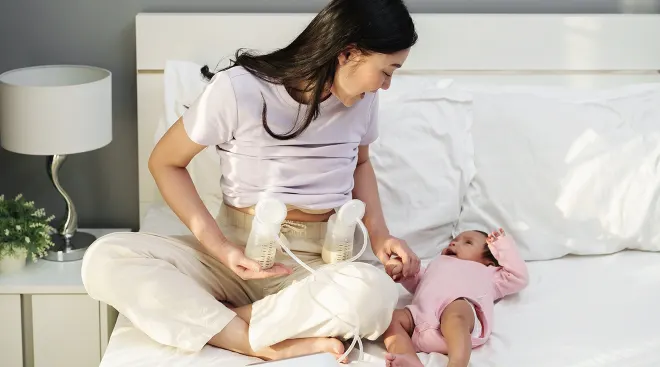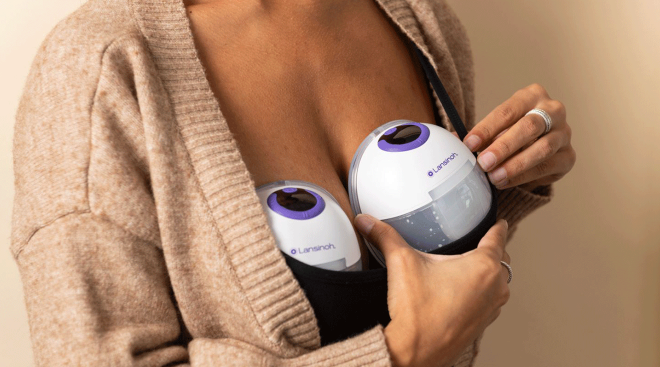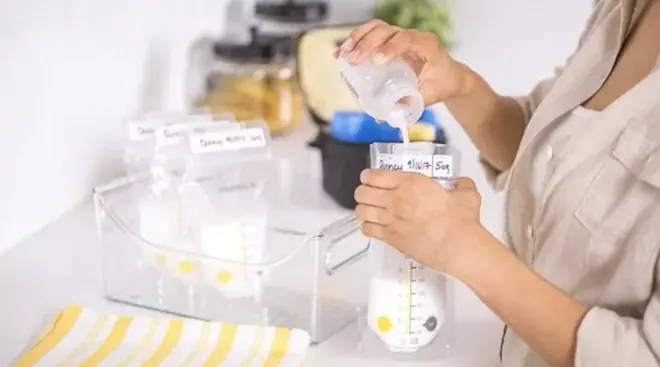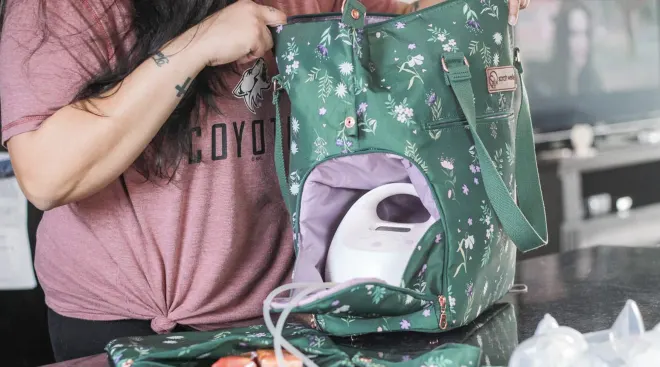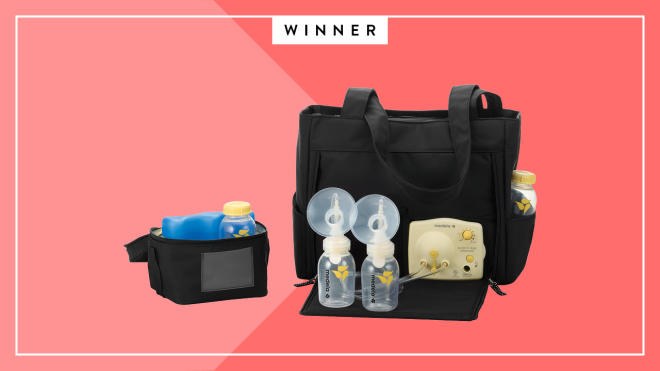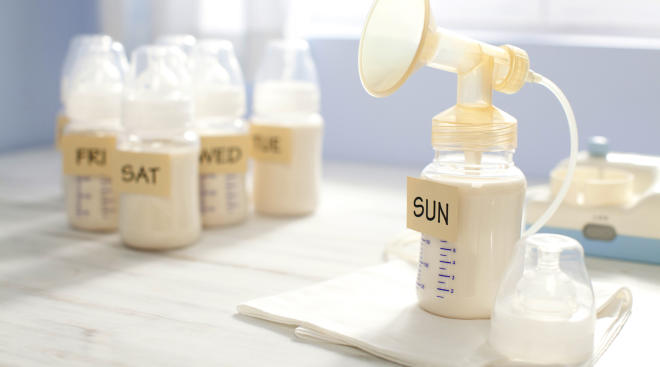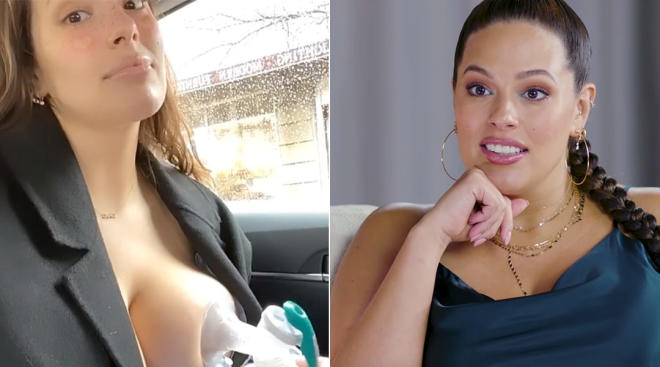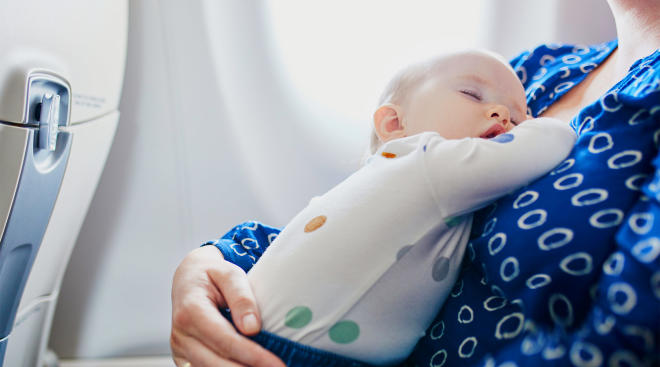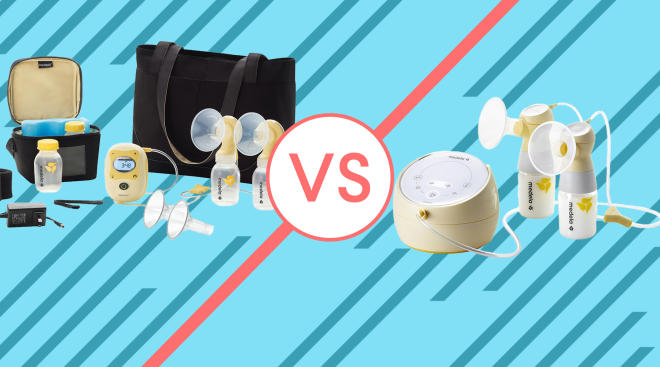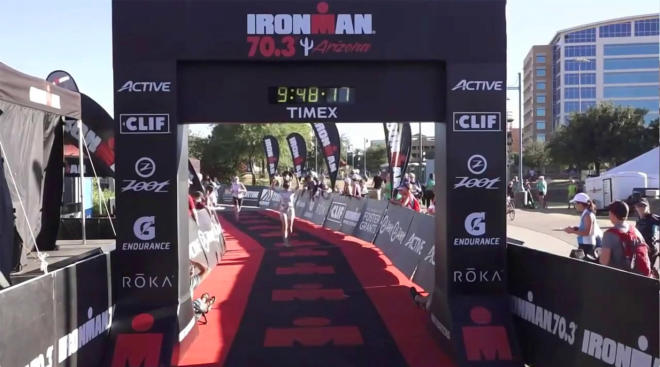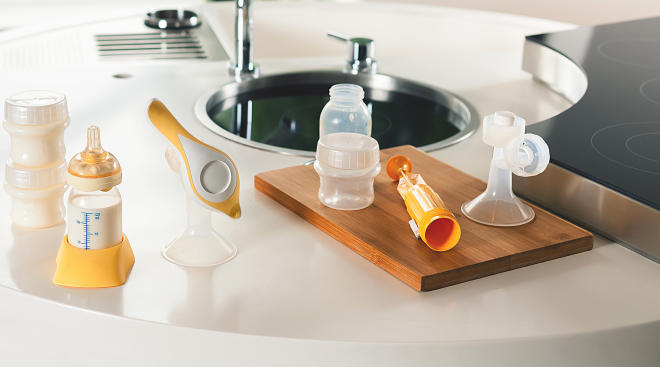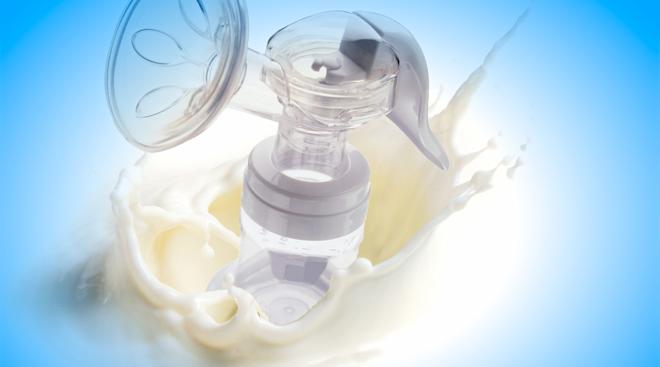What to Look for in a Wearable Breast Pump (From a Mom Who Exclusively Pumped)
One day, after I had seen my other four children off to school, I was home alone with my newborn baby. While it should’ve been a peaceful moment, it was actually the time of day I dreaded most: hooking myself up to my breast pump. As a preemie who spent time in the NICU, my fifth baby had never learned to nurse, so I entered the challenging world of exclusive pumping. This day, however, I was exhausted, my baby was crying, and I contemplated giving up pumping completely.
As a last ditch effort, I ordered a wireless, wearable breast pump online, and my life was forever changed. Just when I had been ready to throw in the towel on breastfeeding, it solved so many challenges for me. I was able to pump while holding my baby, pump while fixing breakfast for my other kids, pump while switching laundry, or pump parked in my car between practice pickups. I’m now a believer in the power of a great pump, and as a mom who has been both a combination pumper and an exclusive pumper (aka EPer), here’s what I’d recommend moms look for if they’re in the market.
Hospital-Strength Suction
The right suction makes all the difference when it comes to pumping more effectively and efficiently. Look for a pump that’s hospital-strength with multiple levels of suction, so you can experiment and figure out what works best for you. Ideally, you can customize suction for each breast individually—no two breasts are the same, and one might require a higher intensity than the other!
Get it with Willow: Willow pumps are built with hospital-grade suction that can be customized per breast. Toggle between stimulation and expression modes with Willow Go, or choose Willow 360 for suction that automatically detects your letdowns to switch between modes.
Inclusive Sizing
For maximum milk output, it’s essential to make sure your breast pump’s flanges fit correctly. This can help prevent nipple pain and discomfort while also ensuring that your pump can properly empty your breasts. (This is because the flange is what creates a seal around the nipple and areola to draw in the nipple and stimulate milk flow.) Most pumps have guides to help you figure out what size flange (or flange and insert combination) is best for your breast. A quality pump should offer a wide range of flange sizes, allowing you to get the right fit.
Get it with Willow: Willow pumps come with a Nipple Sizing Guide and are available in sizes 21mm, 24mm, and 27mm, with sizing inserts ranging from 13mm to 21mm. (Sizing inserts sit inside the flange, creating an even more snug and comfortable fit.)
Willow also offers complimentary sizing support through its team of Mom Coaches, who are lactation educators and trained on all things Willow. You can book a virtual appointment with them here.
A Wearable That’s Cord-Free & Fully In-Bra
It was important to me to continue to provide my baby with breast milk, and I’m thankful I found a pump that allowed me to do so while continuing to take care of my four other children. Of course, exclusive pumpers aren’t the only ones who can benefit from a wearable pump—anyone who wants more flexibility while pumping, whether that’s at work or at home, can gain instant freedom.
Switching to a wearable pump actually helped boost my milk supply because my stress over pumping decreased—a documented phenomenon. Plus, I was able to add more pumping sessions, which helped increase my production as well. But it may take experimenting with different pump types to find the right balance for you. (Remember, you should always talk to a lactation consultant if you have concerns about your supply.)
Get it with Willow: Both the Willow Go and Willow 360 are fully in-bra with no bulky cords, tubes or motors, and a discreet shape that mimics the breast. They’re also app-connected and controlled, making it possible to start, pause and adjust suction levels with a tap.
Comfort and Ease of Use
Everyone is different, but I reached a point with a plug-in pump when I started to dread every single pumping session. It wasn’t comfortable, I dreaded the work involved in setting it up and cleaning it, and I was constantly worrying if my baby would last through the pumping session without crying. (I was alone at home with her and didn’t have extra help.) Eventually, it got to a point where I started putting off pumping sessions, which I knew could lead to dangerous outcomes, like reduced supply or mastitis, which I was at high risk for due to past infections and some milk duct damage I had incurred.
Switching to a wearable, more comfortable pump instantly alleviated much of my stress. There was minimal setup required—I just popped it in my bra and went about my day. I also knew that if my baby needed me, I could easily pick her up and care for her without stopping my session. (Pro tip: I bought two sets of pump parts so I always had a clean set, waiting and ready to go!)
Get it with Willow: Both the Willow Go and Willow 360 are engineered for comfort with a longer flange tunnel (preventing nipple abrasion) and curved flange edge (so breast tissue isn’t pinched or pulled). They can be placed right inside a pumping or nursing bra and managed with the Willow app (or by using the buttons on the pump). If you’re pumping with Willow 360, the app will also track milk output in real time—so you don’t need to reach into your bra to see how much you’ve pumped.
The proof is in the numbers: 8/10 moms say that Willow Go is more comfortable than their other wearable pumps and made their postpartum life easier.
Easy-to-Clean, Dishwasher-Safe Parts
After being an exclusive pumper for almost a year I can safely affirm—the endless cleaning is what gets you. Being able to easily clean your pump is so important, especially because you’ll be constantly washing everything else, from bottles to nipples to milk storage containers.
Some wearable pumps have hand-washable parts only, but I recommend getting a pump with dishwasher-safe parts whenever possible.
Get it with Willow: Both pumps are easy to assemble and clean with dishwasher-safe parts—the Willow Go can be put together one-handed (game changing when you’re holding a baby!), while the Willow 360 has just two parts to clean when using it with milk bags.
Leak-Proof Mobility and Mess-Free Milk Transfer
We all know breast milk is called liquid gold for a reason, and that truth is never more evident than when you’re pumping. Ensuring that no drop is lost starts with the right pump. If you want the freedom to pump virtually anywhere, do your research and understand how many degrees of mobility you can expect with a wearable, and what this mobility will allow you to do while pumping (think: bending over, laying down, etc).
I also found out the hard way that not all breast pumps are built the same when it comes to transferring milk into a bottle, storage bag or container. It’s a good idea to read through reviews and watch videos about transferring the milk to make sure you’re comfortable with the process. It may not be a feature you think about until you’re looking at spilled milk on your kitchen counter.
Get it with Willow: Willow 360 is the only pump that’s 100 percent leak-proof in any position and compatible with self-sealing, ready-to-store milk bags—meaning there’s no need to transfer milk into a bottle or storage bag after you’re finished. Willow Go is leak-proof up to 45 degrees, making it a good option for doing chores around the house while remaining (mostly!) upright.
Travel-Friendly Accessories
If you’re using your pump regularly away from home, consider how easy and convenient it is to pack, store and clean when on the go. Some pumps come with travel cases, but in a pinch, I found that a kid’s lunchbox can also do the trick (and even comes with its own ice pack).
Get it with Willow: Willow pumps are compatible with multiple accessories designed for travel and pumping on the go, such as the Pump Anywhere Bag and Case, Portable Breast Milk Cooler, and Travel Cleaning Pack.
Ready to experience pumping freedom with Willow? Learn more about what makes Willow Go and Willow 360 different and see just how game changing a wearable pump can be.
Buy now: Willow Go, $349.99; OneWillow.com
Willow 360, $499.99; OneWillow.com
Please note: The Bump and the materials and information it contains are not intended to, and do not constitute, medical or other health advice or diagnosis and should not be used as such. You should always consult with a qualified physician or health professional about your specific circumstances.
Breast pumps; (2018). United States Food and Drug Administration.
Nagel EM, Howland MA, Pando C, et al. Maternal Psychological Distress and Lactation and Breastfeeding Outcomes: a Narrative Review. Clin Ther. 2022;44(2):215-227.
Navigate forward to interact with the calendar and select a date. Press the question mark key to get the keyboard shortcuts for changing dates.






































